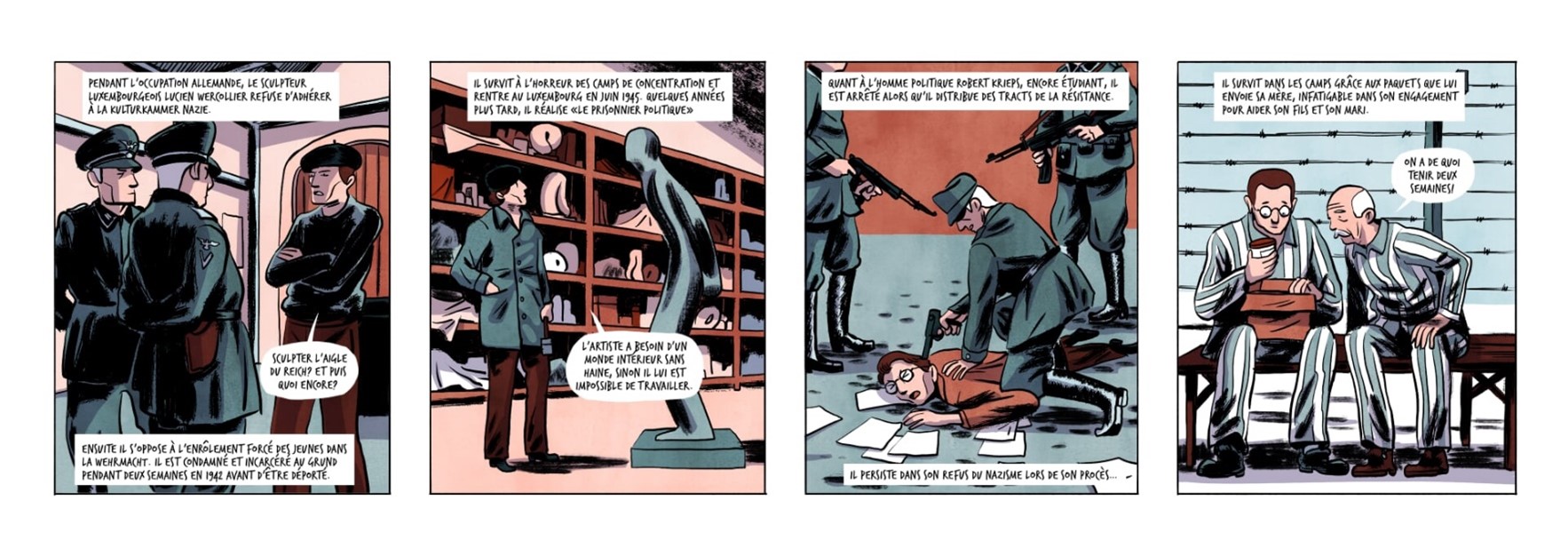This website uses cookies so that we can provide you with the best user experience possible. Cookie information is stored in your browser and performs functions such as recognising you when you return to our website and helping our team to understand which sections of the website you find most interesting and useful.

Lucien Wercollier
Lucien Wercollier is one of the most important Luxembourgish sculptors of the 20th century.
Refusing to join the Kulturkammer created by the German occupier, he was forbidden to participate in any artistic event. By refusing to sculpt the Reich eagle, and by inciting his students at the State Crafts School where he taught to leave the school to avoid the forced enlistment of young Luxembourgish students in the Wehrmacht, Wercollier was arrested by the Gestapo in September 1942. He was first incarcerated for two weeks in neimënster, in the former common-law prison, transformed by the Nazis into a political prison, before being deported to the concentration camp of Hinzert. After surviving the horror, he returned to Luxembourg in June 1945. “For a whole year, I couldn’t create a single sculpture, since the war not only slowed me down in my research, it also made me forget everything I had learned before.” In order to unload this terror and to free himself from his negative feelings, Lucien Wercollier created The Political Prisoner. He never evoked his resentment and sadness in his work, even though he could not forget the pain he suffered. This liberation allowed him to create sensual works full of grace, essentially translating his love for life. neimënster welcomes 25 works with the agreement and support of the family of Lucien Wercollier who died on April 24, 2002. This is the only permanent exhibition within the walls of the former abbey and certainly the most significant in terms of resonance with this place and its history.
Discover some of Antoine Grimée’s illustrations
 Antoine Grimée is a young Belgian-Luxembourgish illustrator and cartoonist. The public of neimënster discovered his work through his portraits and the visual identity of the residence and the jazz festival RESET, as well as the animations and the visual identity of the Festival Bock op. From March 14, 2020, the site of neimënster has been closed to the public. Starting from this exceptional situation, Antoine Grimée drew a weekly comic strip that traced the history of Neumünster Abbey, from the foundation of the monastery Altmünster Abbey, to its use as a state prison until 1985, including its assignment as a transit zone for thousands of resistance fighters locked up by the Nazi police apparatus during World War II.
Antoine Grimée is a young Belgian-Luxembourgish illustrator and cartoonist. The public of neimënster discovered his work through his portraits and the visual identity of the residence and the jazz festival RESET, as well as the animations and the visual identity of the Festival Bock op. From March 14, 2020, the site of neimënster has been closed to the public. Starting from this exceptional situation, Antoine Grimée drew a weekly comic strip that traced the history of Neumünster Abbey, from the foundation of the monastery Altmünster Abbey, to its use as a state prison until 1985, including its assignment as a transit zone for thousands of resistance fighters locked up by the Nazi police apparatus during World War II.


